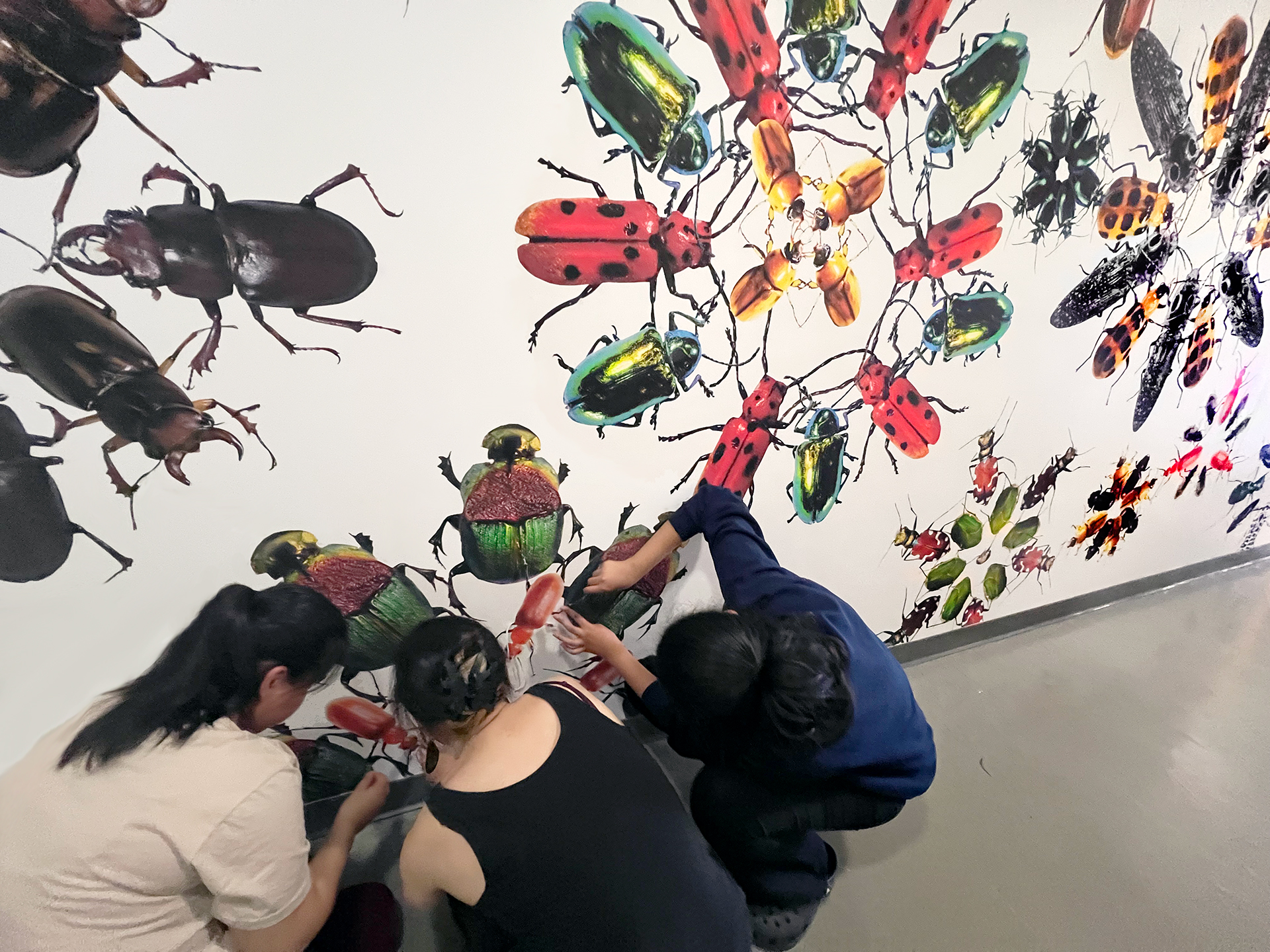“It’s a bit of a grandma-core hobby,” Tierney Brosius admits.
But whether at her children’s soccer tournaments or organizing an “Entomoloknitting Circle” at the Entomological Society of America’s annual conference, Dr. Brosius has found that insect-themed needlecraft can serve not just as an artistic outlet, but as an organic, social means of science communication.
“I love insects in fashion; they’re often used [for] being pretty, but also scary,” she explains. “And I think that fashion designers often reach to insects because of that duality. There’s tension there.”
DR. TIERNEY BROSIUS, PROFESSOR OF BIOLOGY, AUGUSTANA COLLEGE“I think that’s why I interact with artists that deal with insects. They invite people to be curious. And that fear and hesitation can unfold into this sense of wonder.”

For the past decade, Dr. Brosius has hung her hat—and a growing collection of bespoke, hand-knitted vests—as a professor of biology at Augustana College in Rock Island, Illinois. But she’s also built a budding reputation as the entomological fashion maven under the moniker, “Dr. Beetle.”
Her Instagram account documents sartorial projects that include a vest festooned with Salt Creek tiger beetles (the subject of Brosius’s PhD), or a cocoon-style coat that commemorates 2024’s double cicada brood.
Her artistic outreach, however, extends beyond the closet. Inside Augustana’s Hanson Hall of Science, a 40 foot-long wall now hosts a vibrant, larger-than-life “Beetles of Illinois Identification Mural.” Every species pictured—in all of their exoskeleton-ed wonder—were collected by Dr. Brosius and her undergraduates over the course of a single field season.
Wendy DesChene, an artist and professor at Auburn University in Alabama, collaborated with Dr. Brosius to create the mural. She met “Dr. Beetle” years ago while touring Augustana with PlantBot Genetics, a “satirical biotech company.” As their friendship grew, including on-brand gift exchanges (Brosius once knitted her a pair of moth mittens), DesChene proposed working together to make a mural a reality.
“As an artist, it’s hard to find scientists who don’t belittle arts, or don’t think of us as a true partnership,” DesChene says. “I really wanted to work with somebody who I know as a peer, and who treats me and what I bring to the table as equal.”
Dr. Brosius, meanwhile, had no such hang-ups. “I think that’s why I interact with artists that deal with insects,” she says. “They invite people to be curious. And that fear and hesitation can unfold into this sense of wonder: ‘Oh my gosh, I never knew.’ Even a drain fly, right? The silliest little thing … but if you really get up close, they’re like little teddy bears with wings.”

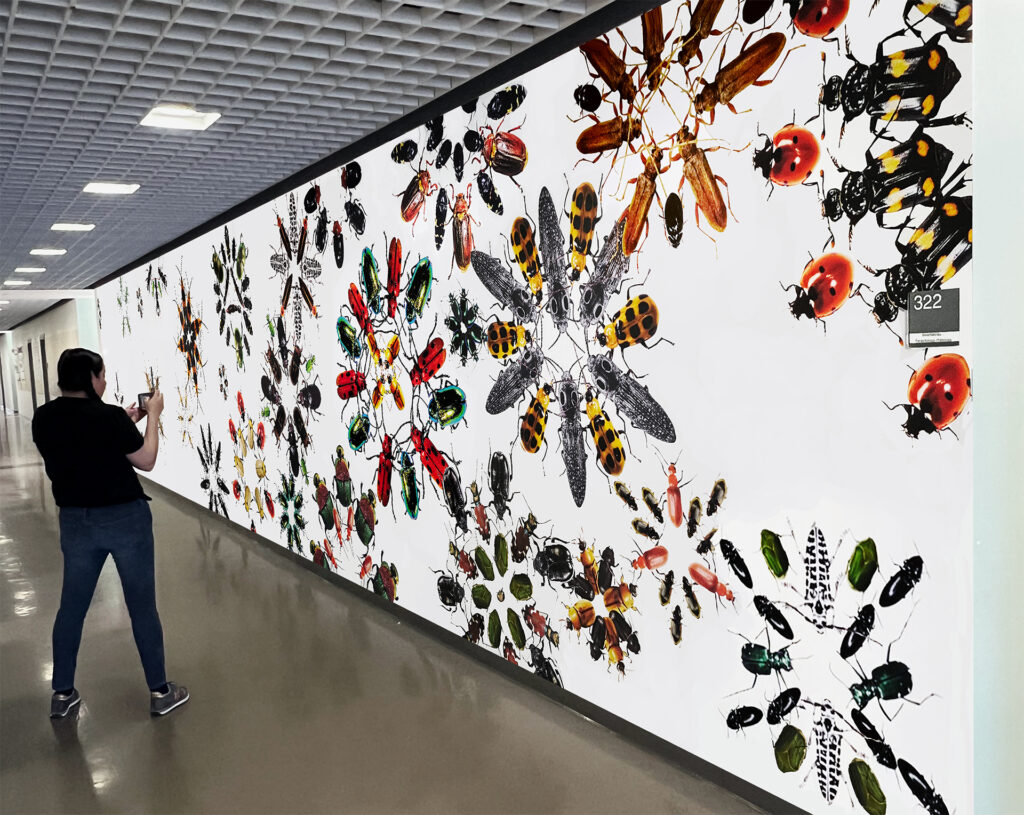
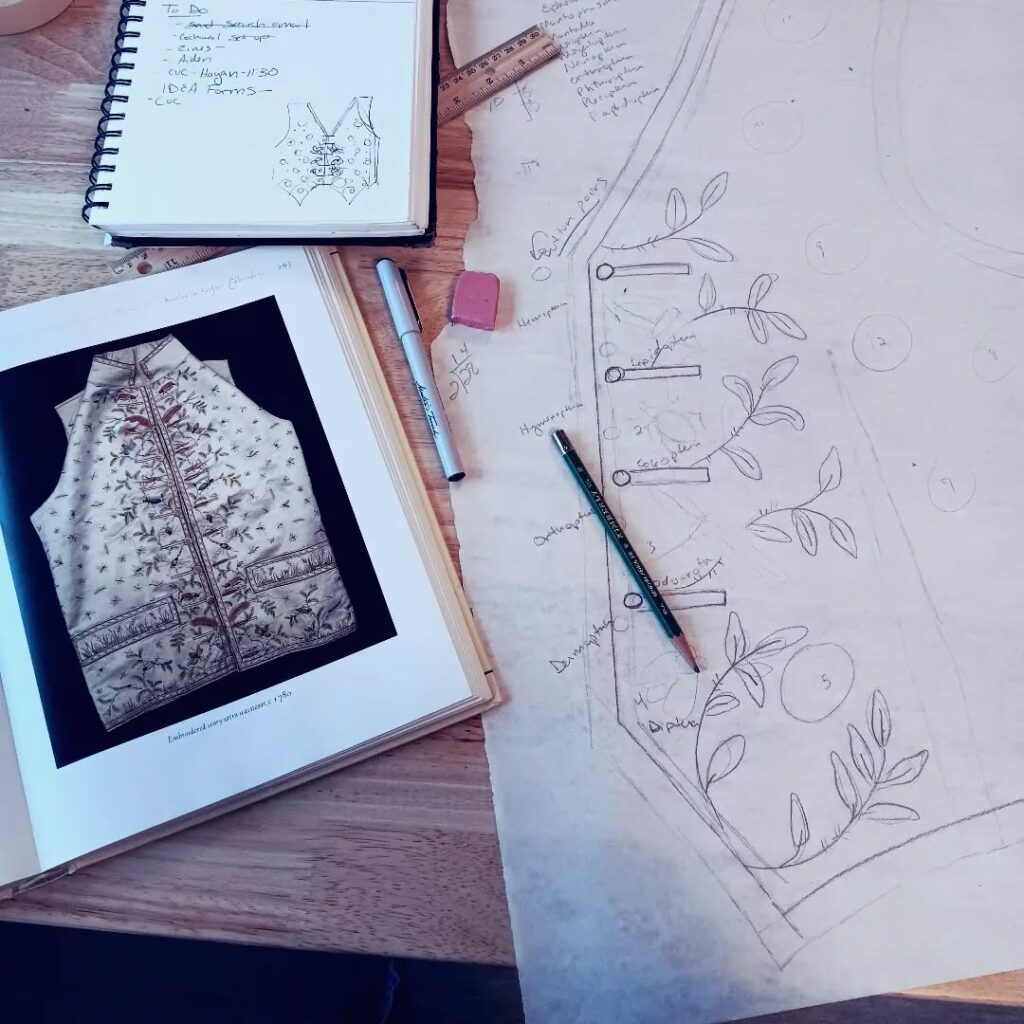

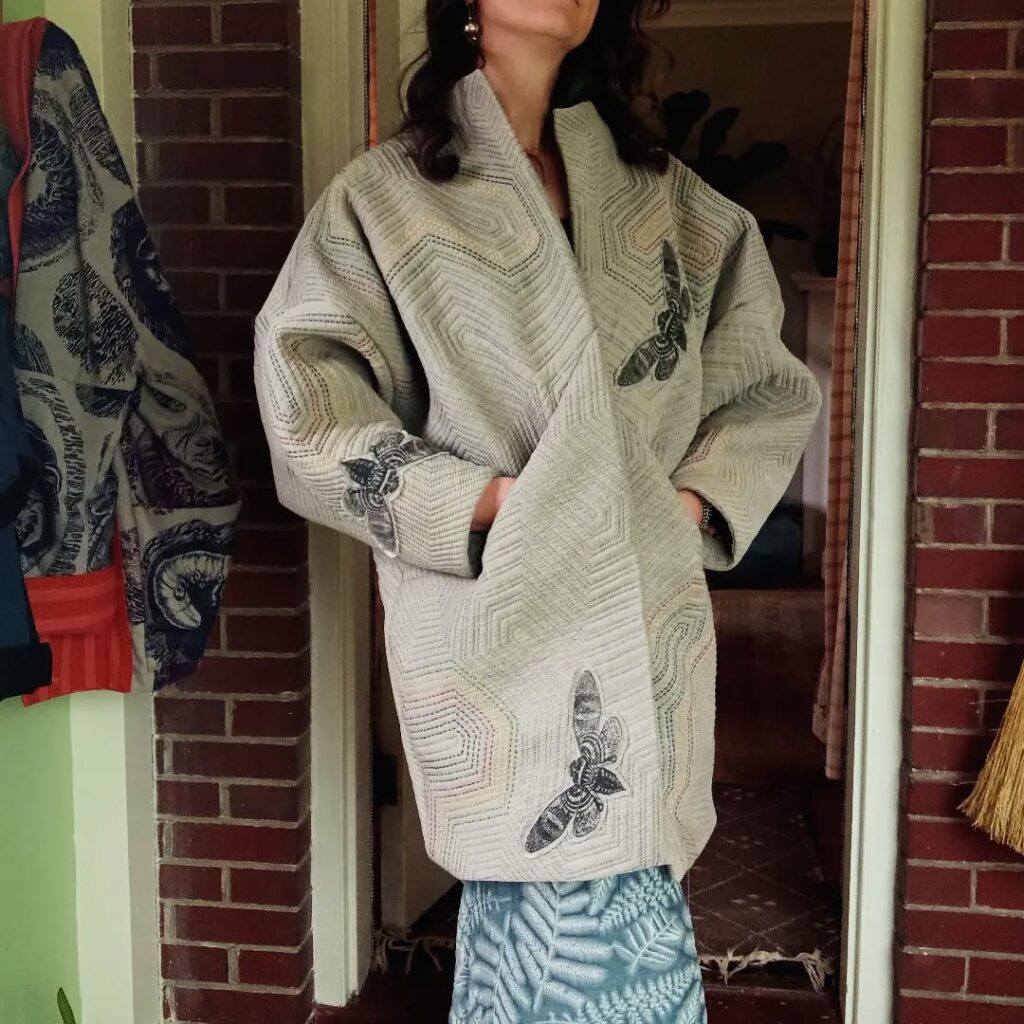
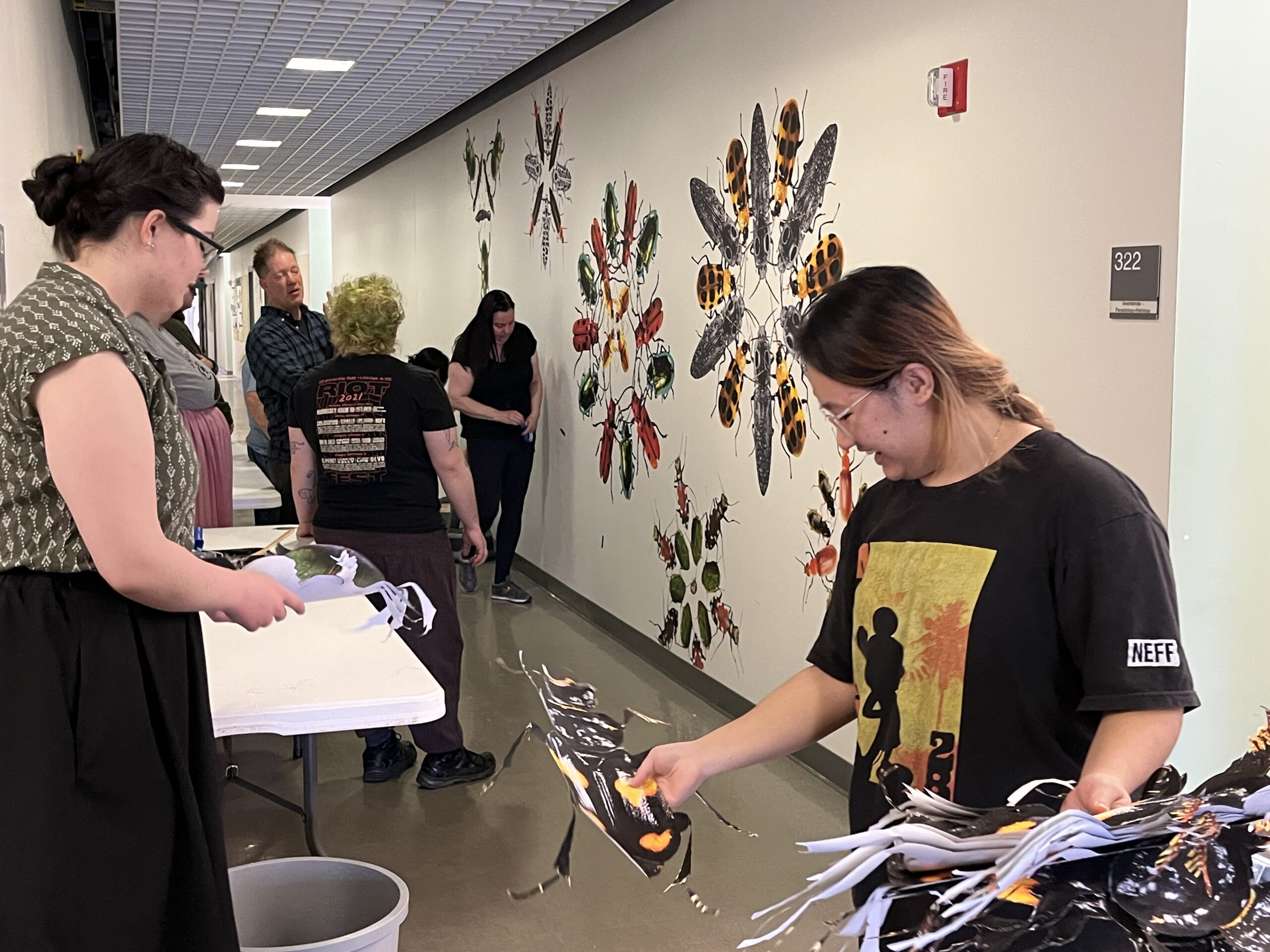
The professor is especially fond of watching these transformations happen in real-time, in the class she teaches for non-majors. These are students who often enroll in the hopes of simply snagging a required biology credit, but who leave with a newfound love for nature’s more chitinous creepy-crawlies. A few have gone so far as to become professional entomologists themselves.
“And I think that’s what’s so great about insects,” she says, “because it’s a great analogy for life: you can be a little tense and fearful, and it’s probably because you don’t know enough about it. Once you start to peel back the layers, that fear can fall away. And you’re left with appreciation and love.”
